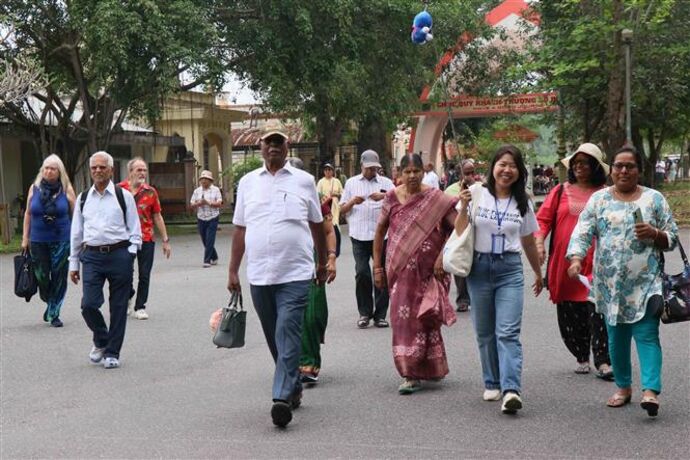We noticed them as soon as India’s famous symbol came out: signs ” Save Taj Ganj ” and ” #We Want Justice waiting for tourists and visitors around the small shops around the Taj Mahal. Due to merchants in the historic Taj Ganj district, home to 17th century monumentse centuries on three sides now struggling to survive.
On September 26, the country’s Supreme Court ordered a halt to all commercial activities within a 500-meter radius around the Taj Mahal. They have until Monday to stop operations. From now on, anyone involved in commercial activities in the vicinity of historical monuments can be prosecuted, in accordance with the law.
However, hundreds of small restaurateurs, craftsmen, and hoteliers are located this distance from the stables. And for these workers, the closure of their businesses implies not only the loss of their livelihoods, but also grief for their family businesses, many of which have been in operation for decades.
Zai, the owner of a small marble craft shop, was among those affected by the new law. In front of his business, just opposite the east gate of the Taj Mahal entrance, there is a sign ” Justice for the Taj Ganj “.
The owner who is in his fifties looks gloomy when asked about it. This sucks. I can’t do anything else [comme travail] : my family has owned this shop for generations. This is the case for almost everyone here,” he explained.
Another small business owner in the area, Ajay Singh, agrees: “All the owners here are sad because we have no other work. We only have that. This is my family business. From my grandfather, it was passed on to my father, then to me,” he said with a sigh.
Like Zai, however, Ajay hopes he doesn’t have to pack up anytime soon. United under the Tajganj Development Foundation, which will challenge the order at a higher Supreme Court level, hundreds of traders are still clinging to hopes of having their cases tried in the Supreme Court for the ruling to be overturned next week.
Nitin Singh, a tour guide for the Taj Magal – who has also offered visits to many heads of state, such as Donald Trump or Justin Trudeau – is the group’s president. Being a resident of Taj Ganj himself, he has made it his mission to defend the merchants in his neighborhood to the end.
“When the Supreme Court makes its decision, it doesn’t listen to the people who are most directly affected, those who are suffering the most right now,” he said inside a small shop on the large driveway to the Taj Mahal.
By his side, Hydar Khan, the owner of Agra Marble, was equally worried. “This shop has been around since the 1980s. I am sad about this situation. I don’t know what else to do,” he said.
Like many others, Mr. Khan inherited the business from his father and never knew anything but dealing with tourists. If he did have to close shop, he didn’t know where he would go.
” There isn’t any [arrangement] for traders. We don’t even know if they can settle elsewhere. There is no plan,” lamented Mr Singh, assessing that the move would affect more than 2,000 traders.
The committee led by Mr. Singh will defy the Supreme Court order and demand that traders be heard before any decision to ban commercial activity is taken.
The Supreme Court’s decision stems in part from a petition from a group of 71 traders who have been moved from their original location to a new location near the parking lot, just 500 meters away from the monument. The group complained about having to move, while some commercial activity was still going on in the vicinity.
This report was financed with the support of Transat International Journalism Fund-Task.
To see in the video

“Twitter junkie. Hipster-friendly bacon expert. Beer ninja. Reader. Communicator. Explorer. Passionate alcohol geek.”







